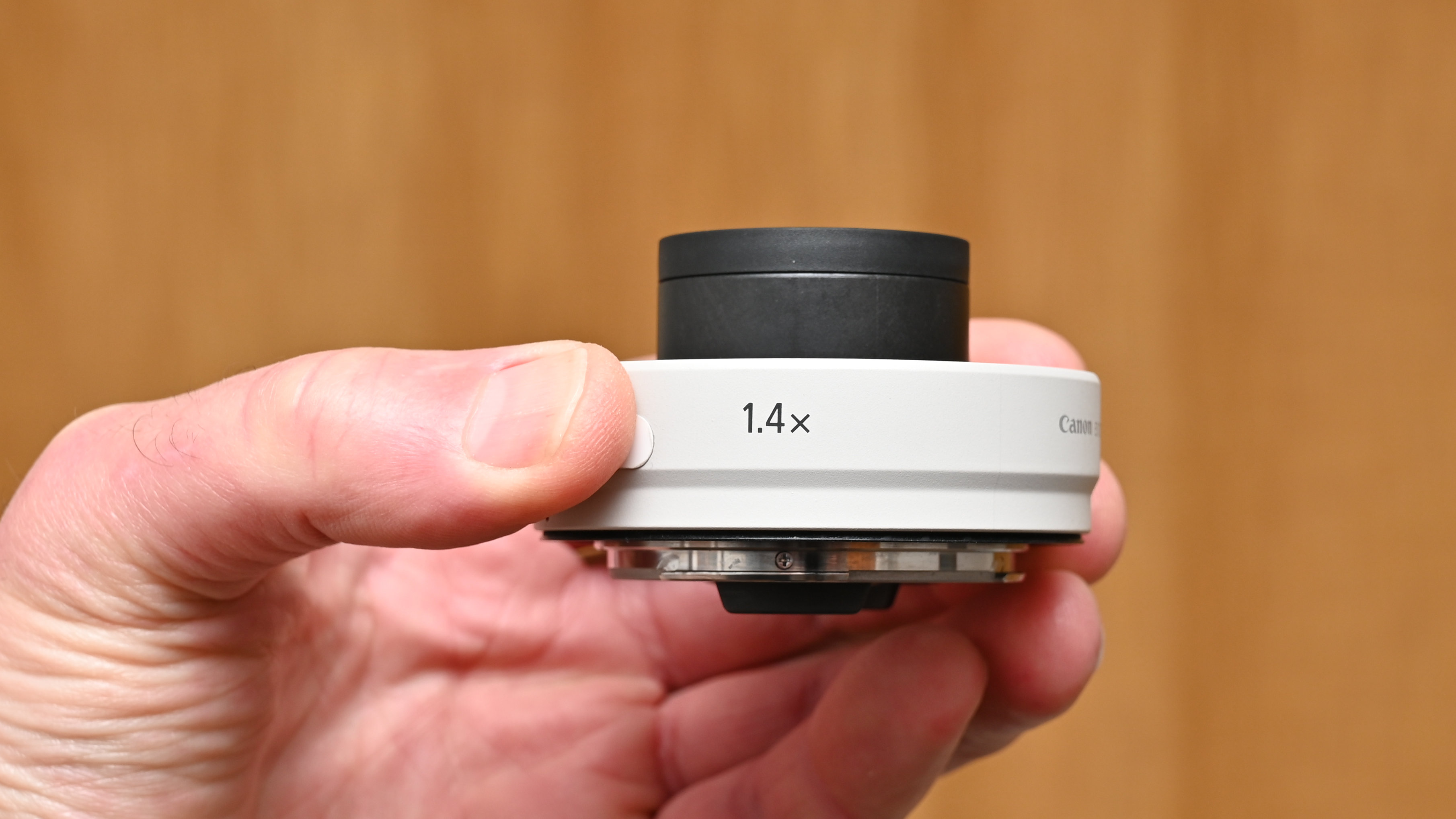
The Canon Extender RF 1.4x is designed for EOS R-system mirrorless Canon cameras and compatible RF-mount Canon telephoto lenses. As such, it builds on the strength and reputation of the latest Canon Extender EF 1.4x III for DSLRs, which can also be used on EOS R cameras via an EF-EOS R mount adapter. Aimed at professional and enthusiast photographers, it sets out to be one of the world’s best teleconverters.
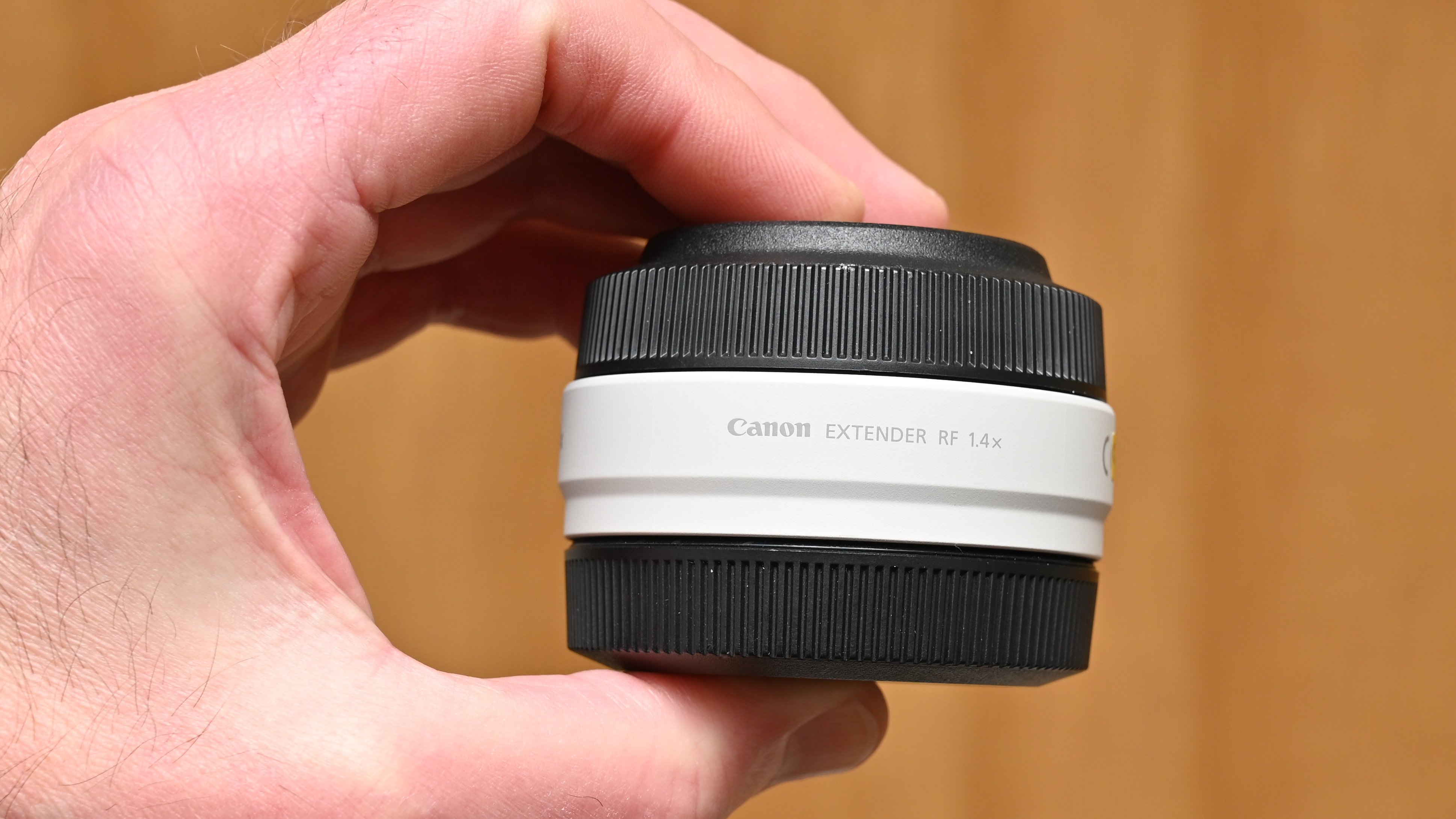
As a 1.4x teleconverter, the focal length of the attached lens is magnified by a factor of 1.4x, with a 1 f/stop reduction in aperture rating, so a 70-200mm f/2.8 zoom effectively becomes roughly a 100-280mm f/4 lens. That’s actually a bit of a moot point. The combination of this type of ‘trinity’ telephoto zoom lens and a teleconverter is a favorite of many photographers. While I can accept that Canon wanted to shrink the dimensions and weight of the Canon RF 70-200mm F2.8L IS USM, as well as the ‘slower’ Canon RF 70-200mm F4L IS USM, it’s massively frustrating that both these lenses are completely incompatible with the RF Extender 1.4x and 2x teleconverters, due to a lack of space between the lenses’ rear element and mounting plate.
The 1 f/stop reduction is more of an issue on a lens like the Canon RF 100-500mm F4.5-7.1L IS USM, where the widest available aperture towards the long end of the zoom range shrinks to f/10 (f/14 with the 2x extender). And even then, compatibility is limited as you can only use the teleconverter in the longer 300-500mm sector of the zoom range. On the plus side, there’s full compatibility with a growing range of other RF prime and zoom telephoto lenses, from the Canon RF 100-400mm F5.6-8 IS USM right up to the Canon RF 1200mm F8L IS USM.
Canon Extender RF 1.4x: Specifications
Canon Extender RF 1.4x: Price & Availability
At $499 / £579 / AU$899, the Canon Extender RF 1.4x is pretty pricey for a 1.4x teleconverter but there’s more to it than meets the eye. With its high-spec feature set and pro-grade build quality, you get what you pay for. It’s worth noting that the rival Nikon Z Teleconverter TC-1.4x is similarly priced. If you want more reach then the bigger and more powerful Canon Extender RF 2x is rather more expensive at $599 / £719 / AU$999.
Canon Extender RF 1.4x: Design & Handling
Primarily aimed at sports, wildlife, and press photographers who often need to shoot from a long distance and in all weather conditions, the Canon Extender RF 1.4x is built to be tough and reliable. The design therefore features weather seals that combine with those of L-series lenses, as well as vibrational shock resistance. The teleconverter also features a white ‘heat shield’ coating, again similar to that of most L-series telephoto lenses.
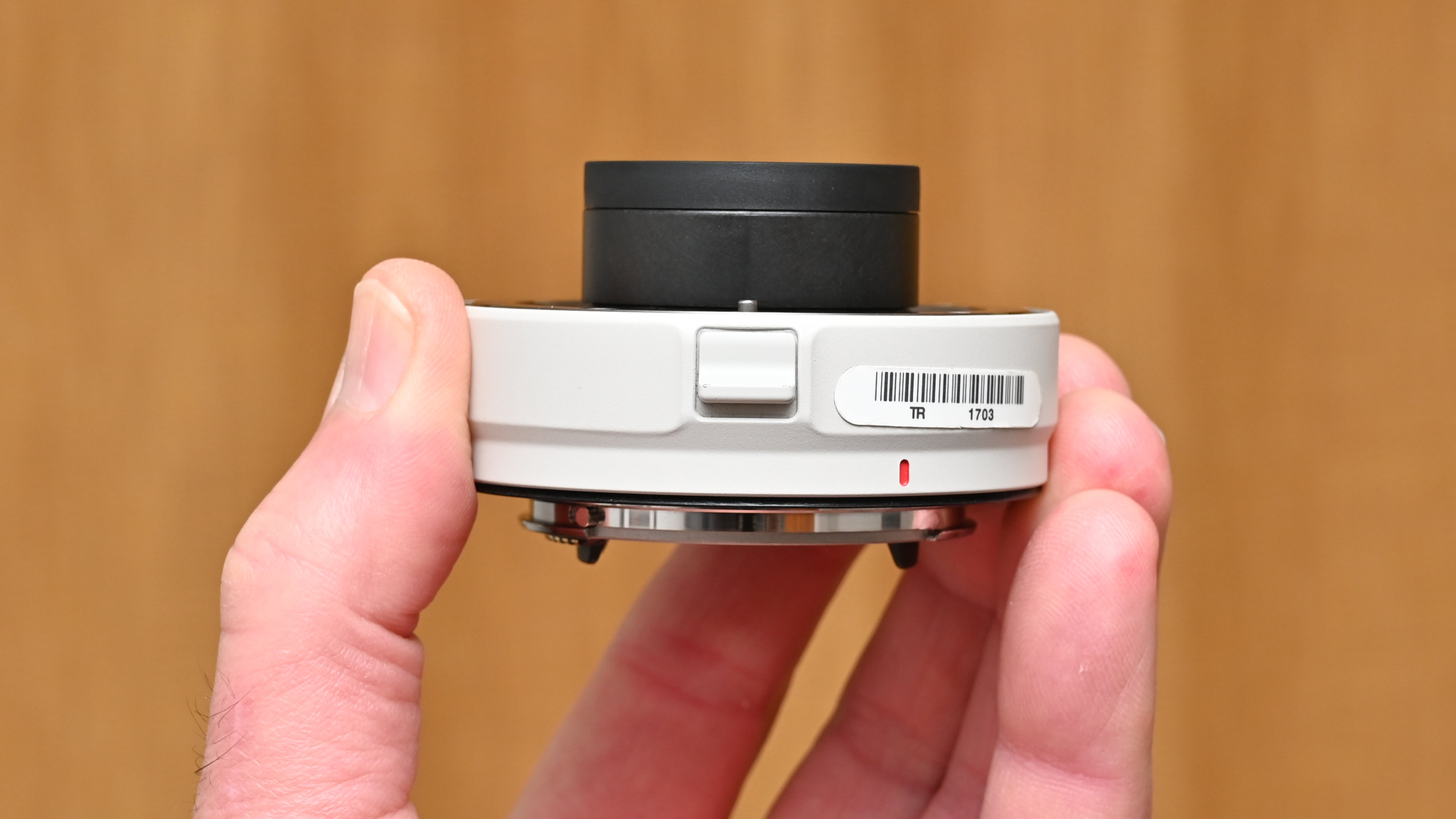
Naturally, if you’ve invested a lot of money in a high-quality telephoto prime or zoom lens, you don’t want to repeat the exercise for the sake of more telephoto reach. Less than an inch thick and weighing just 225g, the Canon Extender RF 1.4x adds little to your original lens with a barely perceptible gain in size and weight, and is massively cheaper and more convenient than buying and carrying an additional telephoto or super-telephoto lens.
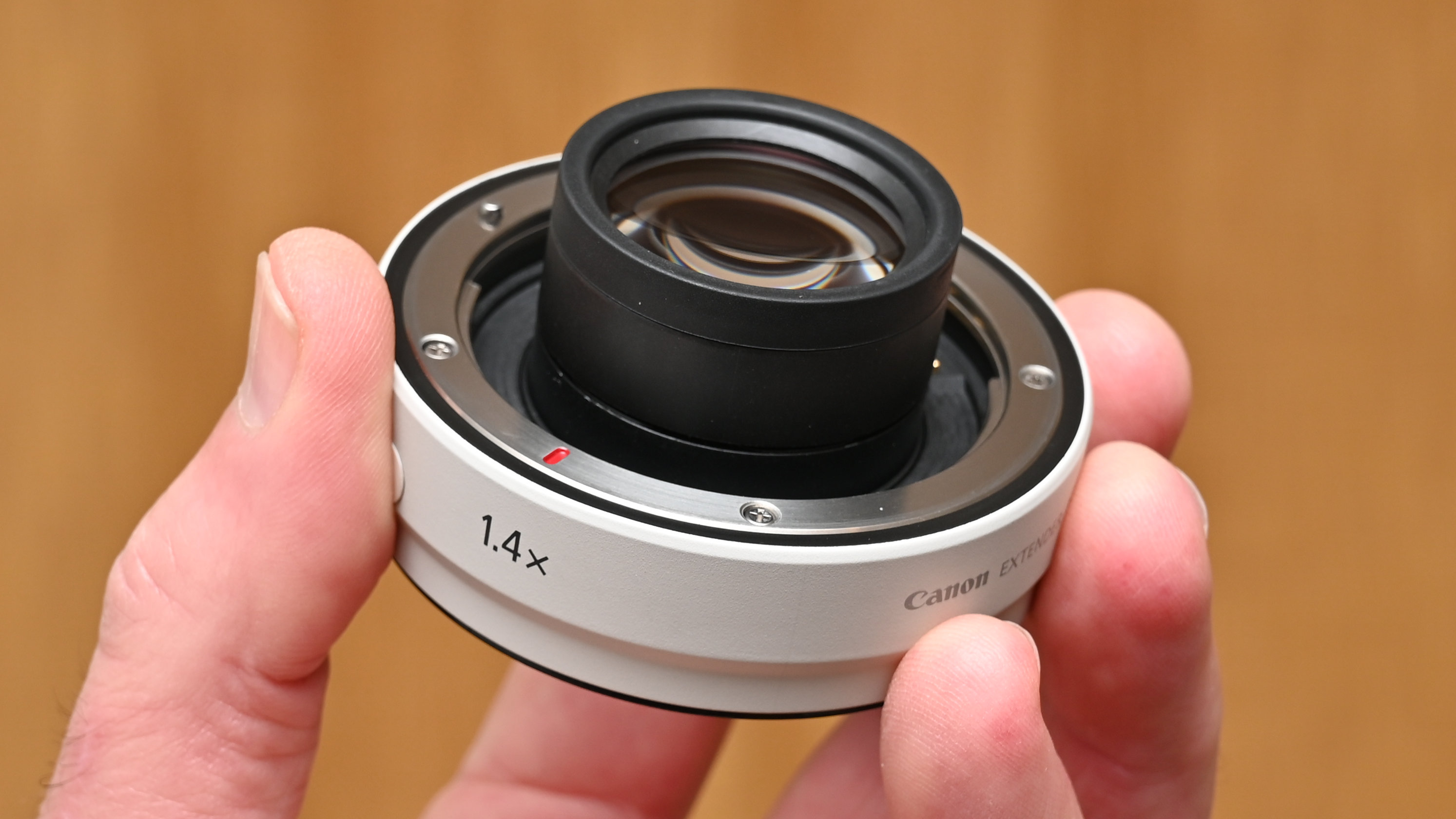
One of the advantages of the EOS R-system and its native lenses, compared with older Canon DLSRs and EF-mount lenses, is that data communication between the camera body and lens is massively faster. This benefits factors like the speed and accuracy of autofocus, and the effectiveness of image stabilization. As I’d expect, the electronics of the Canon Extender RF 1.4x are engineered to maintain those advantages.
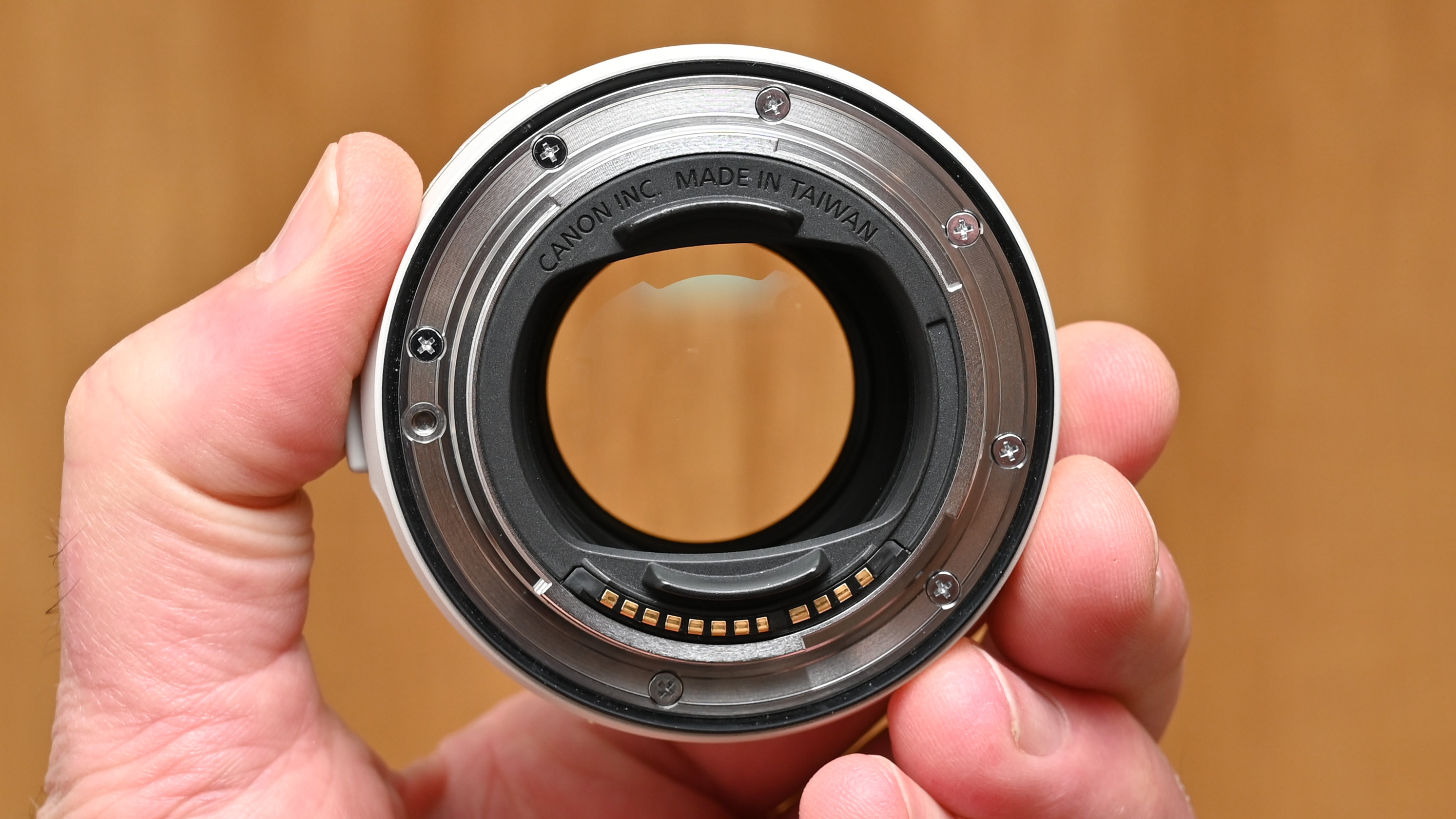
I’d also expect quality glass in a teleconverter with this kind of price tag. Even so, I’m impressed at the array of low-dispersion and high-refractive index glass that’s featured in the lineup of 7 elements, arranged in 4 groups. These include a 3-layer combined element and advanced coatings, which work together to minimize flare and ghosting.
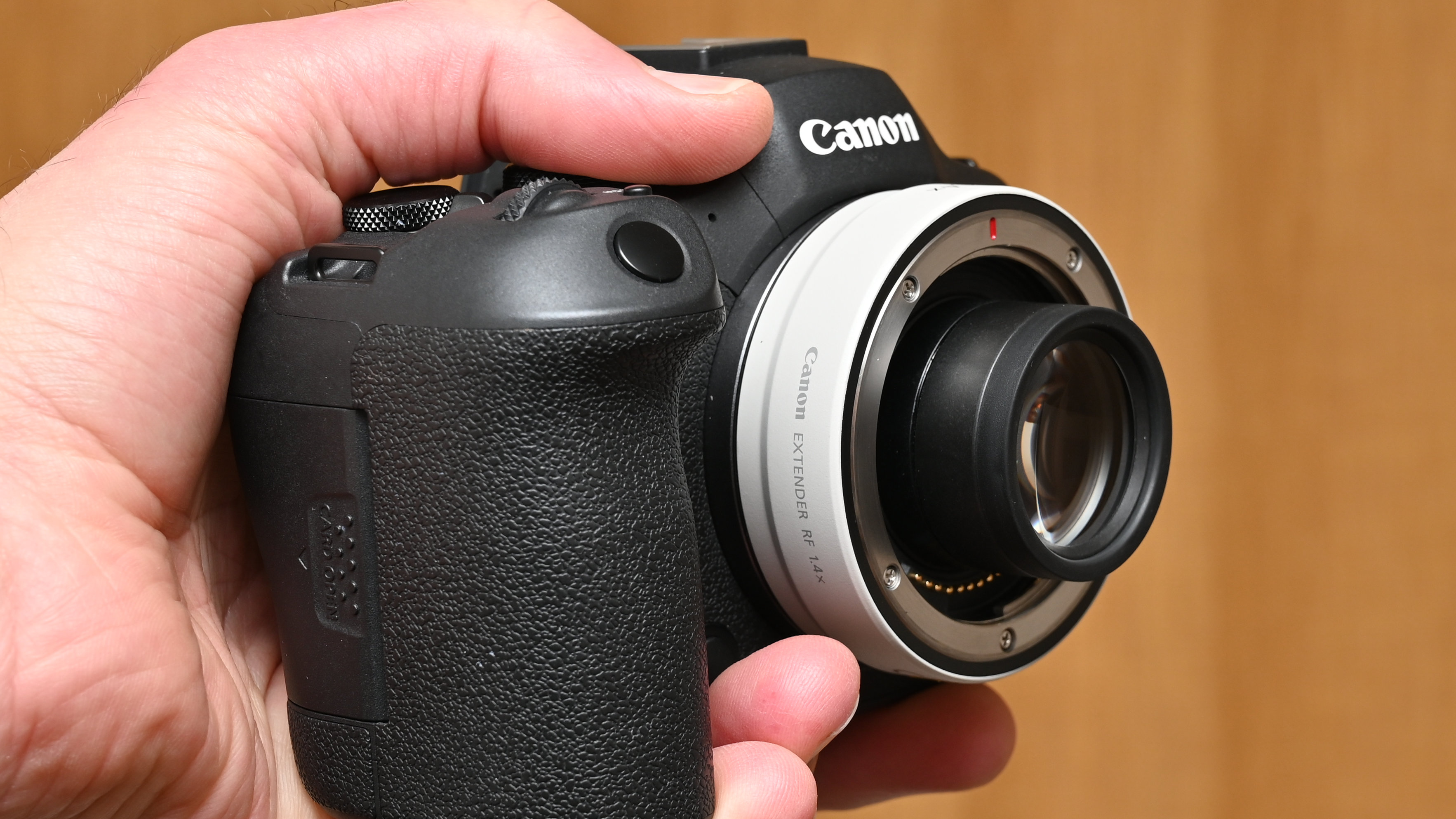
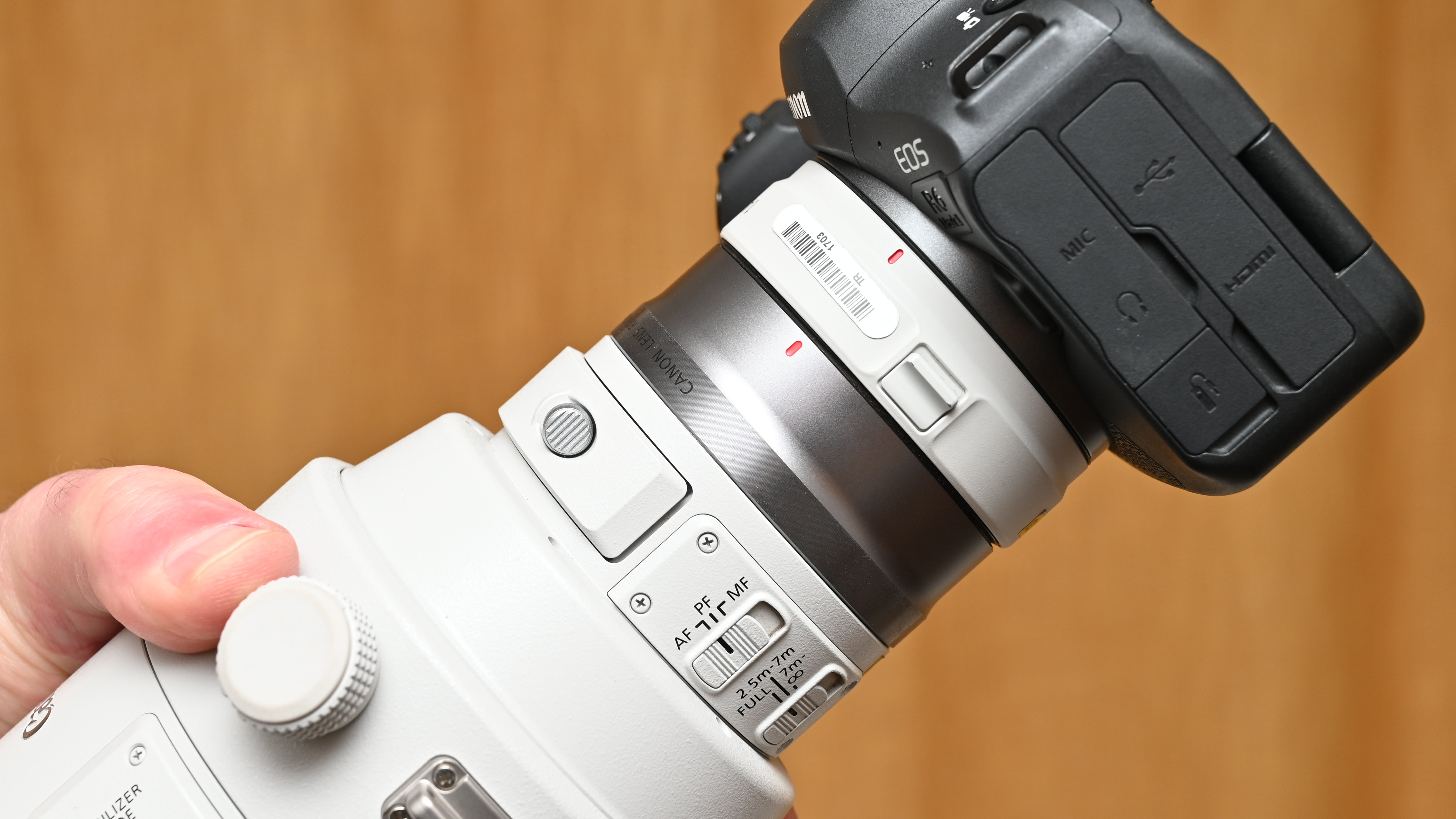
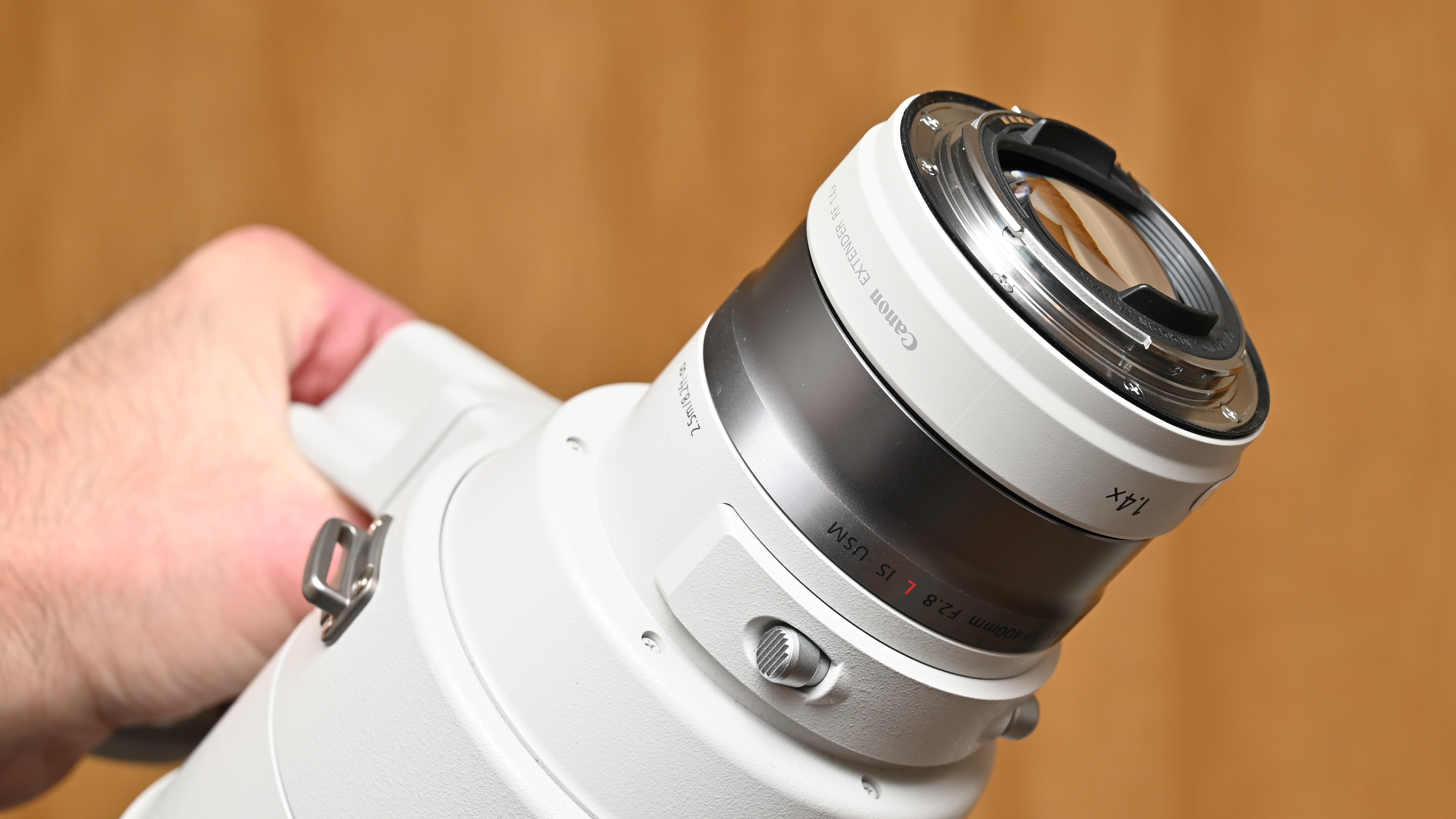
Canon Extender RF 1.4x: Photo Performance
I tested the Canon Extender RF 1.4x with a Canon EOS R6 Mark II camera body and top-spec Canon RF 400mm F2.8L IS USM lens. Teleconverters are somewhat notorious for impacting on the performance of lenses to which they’re attached. You’ll often notice a slowing of autofocus speed and a hit in terms of the effectiveness of image stabilization. Moreover, there’s usually a degradation in image quality, especially in terms of sharpness, and a rise in chromatic aberration.
The good news is that I found the overall performance of the camera body and lens to be only slightly affected by the addition of this teleconverter. Autofocus remained super-fast and well-able to track subjects in motion, while optical image stabilization remained highly effective, given that you need to factor in the longer focal length for shutter speeds with handheld shooting.
Image quality from the RF 400mm lens is phenomenal, as you’d expect from a lens that costs so much to buy. Our lab tests revealed a very little drop in sharpness when using the 1.4x teleconverter at f/8, with the main lens at f/5.6. At other apertures, there was more of an impact in sharpness but results during real-world shooting conditions remained very impressive.
Canon Extender RF 1.4x: Sample Images
For the sake of comparison, the following gallery includes a series of shots taken with a Canon EOS R6 Mark II and a Canon RF 400mm f/2.8L IS III USM on its own, as well as with both a Canon Extender RF 1.4x and a Canon Extender RF 2x. This shows differences between using the lens natively, as well as with the 1.4x and 2x teleconverters. The first sequence was taken from a viewpoint overlooking the city of Bath, UK, from a distance of half a mile, on an overcast morning. Due to deteriorating weather conditions with strong winds and heavy rain, the subsequent shots were taken indoors under studio flash lighting. All of the example images were taken using a sturdy tripod and exposure delay mode, and shot several times to ensure the consistency of results. As per our usual testing regime, all of these images were taken in addition to the lab-test shots that we capture, based on the use of official test charts.





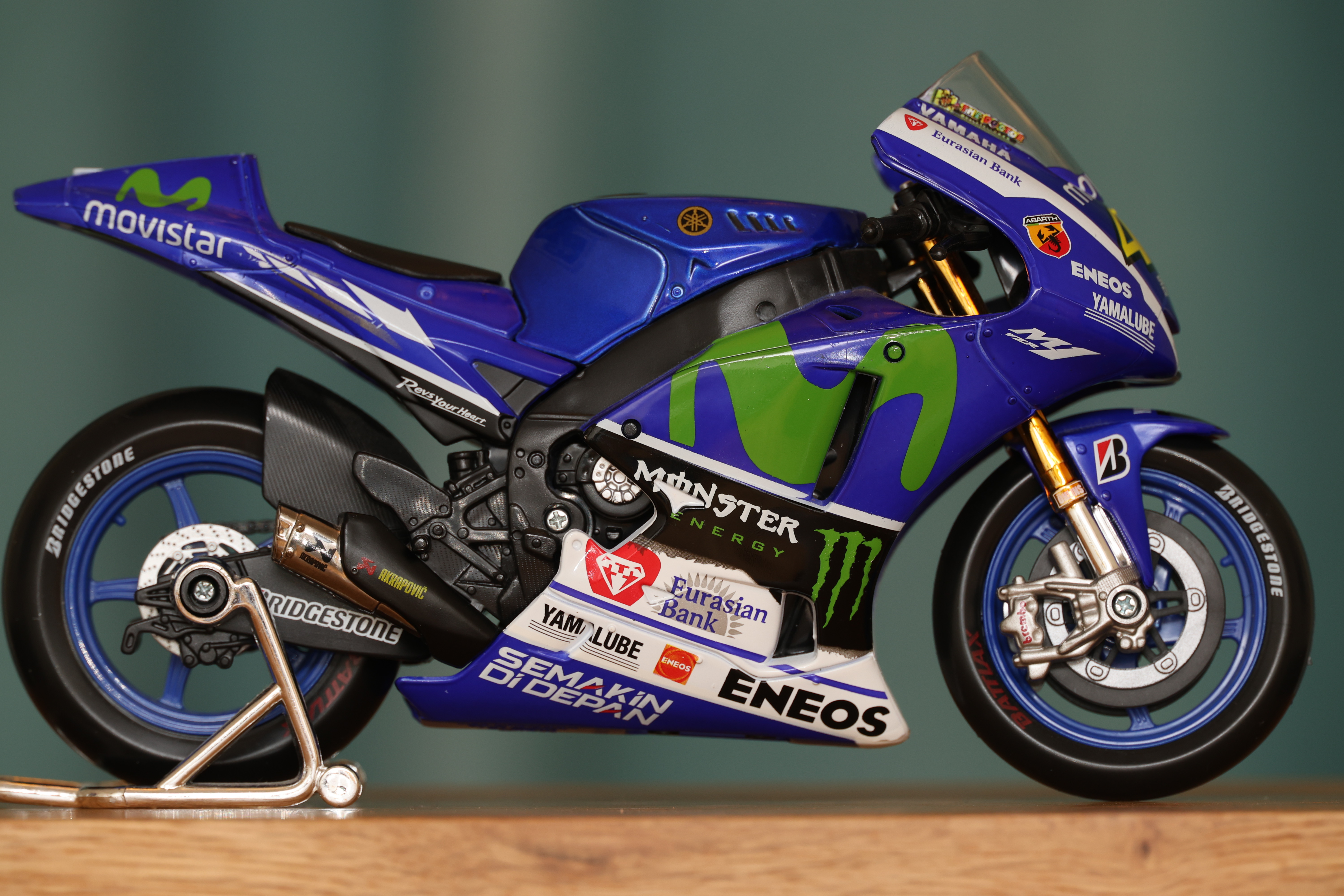









Canon Extender RF 1.4x: Lab Results
We run a range of lab tests under controlled conditions, using the Imatest Master testing suite. Photos of test charts are taken across the range of apertures and zooms (where available), then analyzed for sharpness, distortion and chromatic aberrations.
We use Imatest SFR (spatial frequency response) charts and analysis software to plot lens resolution at the center of the image frame, corners and mid-point distances, across the range of aperture settings and, with zoom lenses, at four different focal lengths. The tests also measure distortion and color fringing (chromatic aberration).
Sharpness:
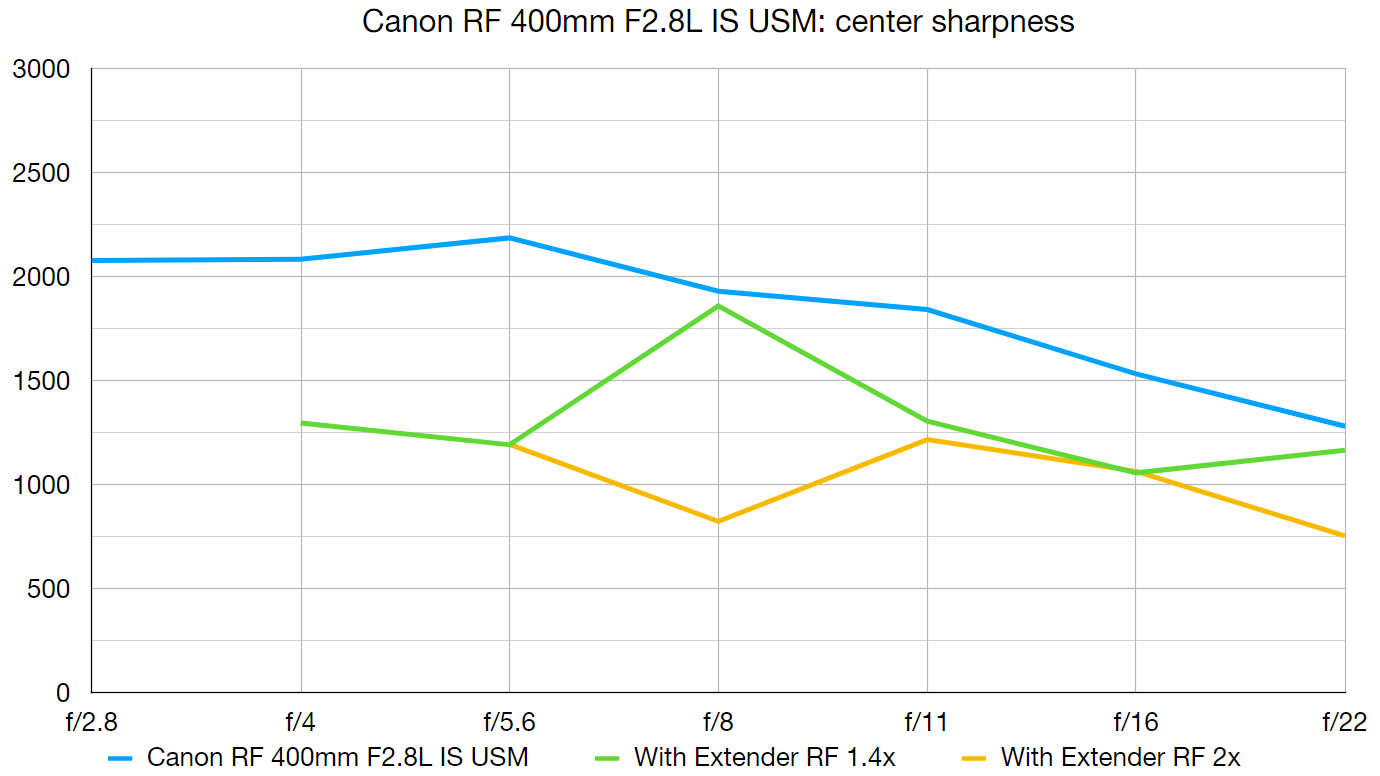
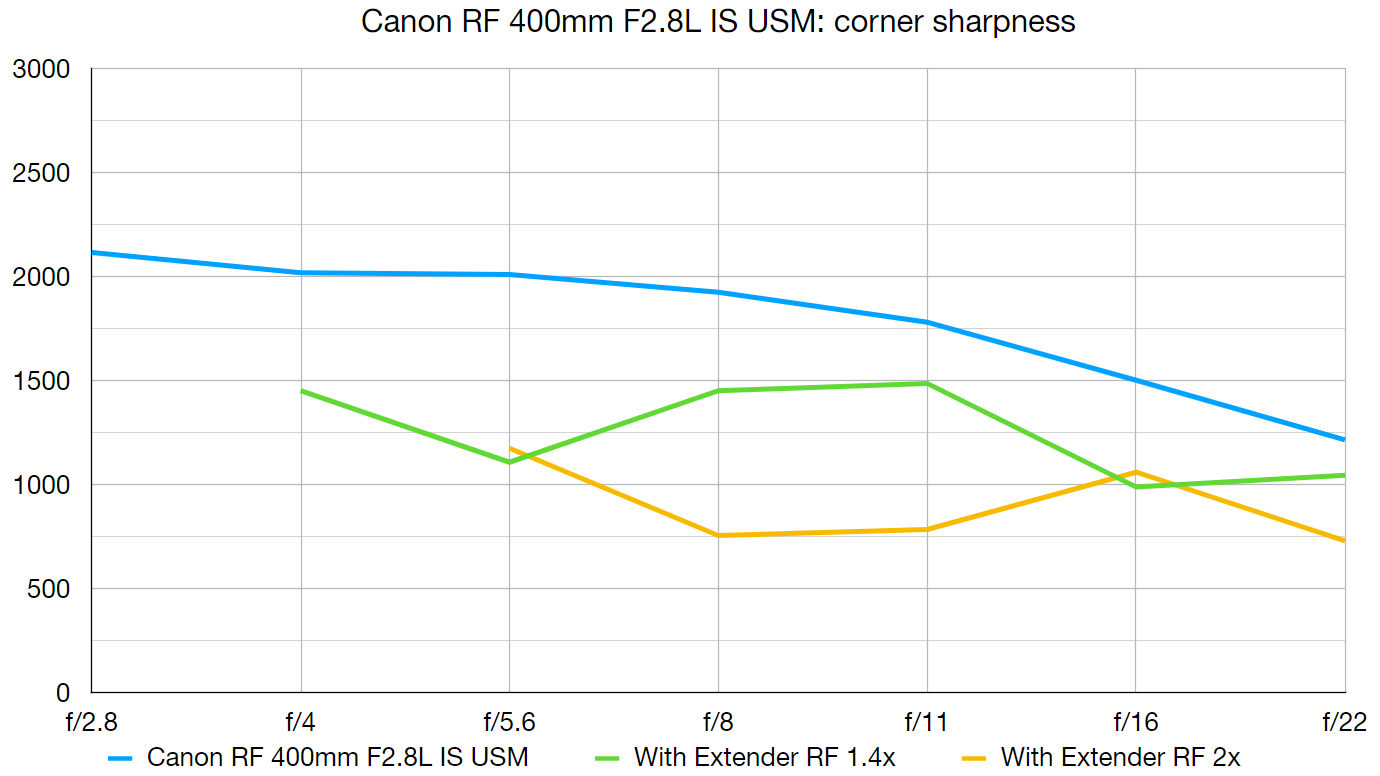
With the aperture set to f/8, the main lens is at f/5.6, due to the 1 f/stop narrowing when using the teleconverter. In this case, lab test results for sharpness are particularly impressive. In real-world shooting conditions, I found that sharpness was similarly impressive at other apertures.
Fringing:
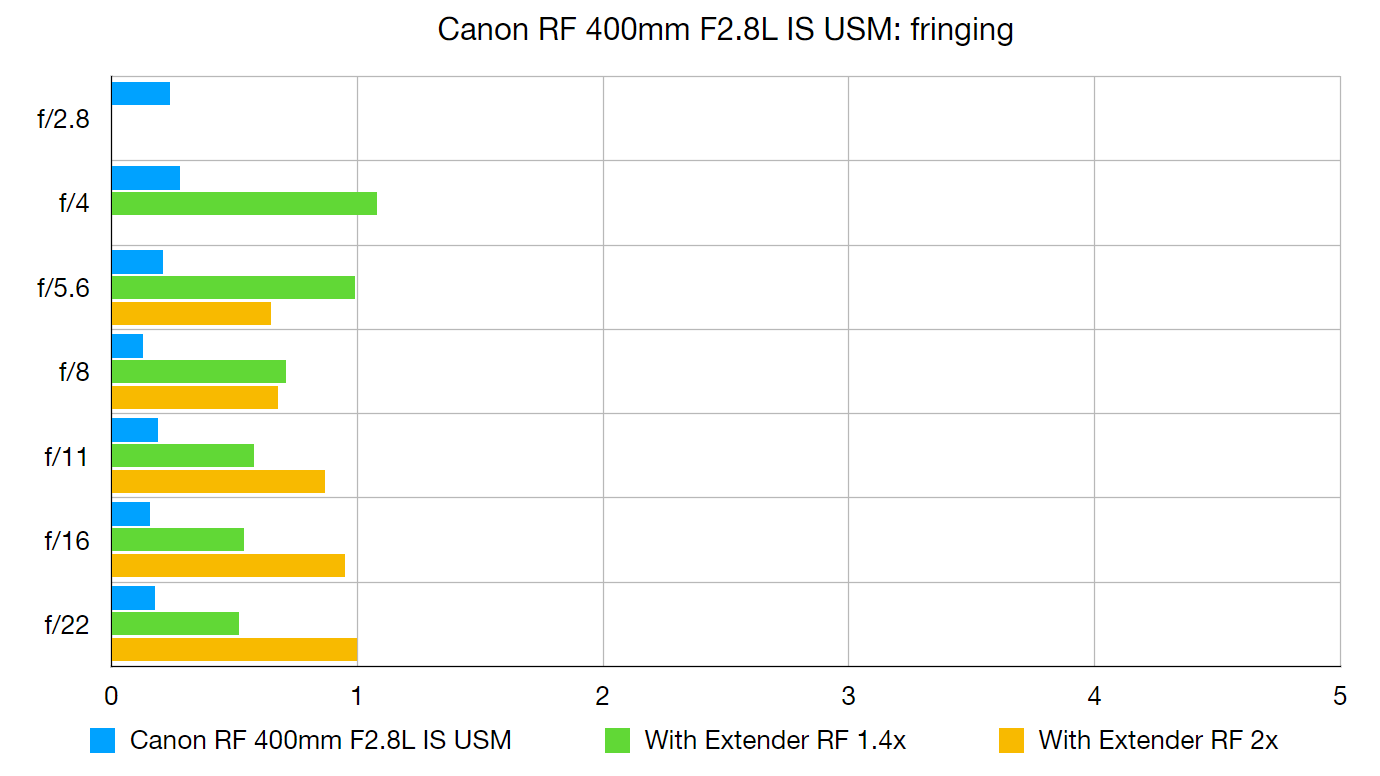
There’s an increase in color fringing outside of the central region of the frame when using the teleconverter but it’s only slightly noticeable and easily taken care of by automatic in-camera correction.
Distortion: -0.11
The slight pincushion distortion of the 400mm lens turns into an almost negligible amount of barrel distortion when using the 1.4x teleconverter.
Canon Extender RF 1.4x: Verdict
I love that the Canon Extender RF 1.4x delivers such excellent performance and maintains such good image quality. I also love that it’s so compact and lightweight. When you need a bit more telephoto reach, it’s a lot cheaper and more convenient than adding a whole extra telephoto lens to your kit. It’s just a shame that it’s not compatible with Canon’s RF 70-200mm f/2.8 and f/4 lenses, on which it would be ideal.

Should you buy the Canon Extender RF 1.4x?
✅ Buy this...
- 1.4x telephoto boost
- Premium build quality
- Excellent performance
🚫 Don't buy this...
- Incompatible with some lenses
- Pretty pricey
- 1 f/stop aperture reduction







